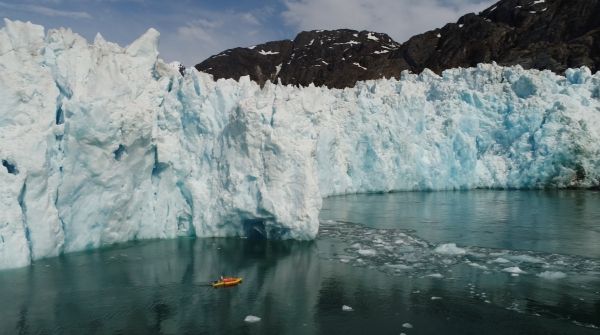Tidewater glaciers, the massive rivers of ice that end in the ocean, may be melting underwater much faster than previously thought, according to a Rutgers co-authored study that used robotic kayaks.
The findings, which challenge current frameworks for analyzing ocean-glacier interactions, have implications for the rest of the world’s tidewater glaciers, whose rapid retreat is contributing to sea-level rise.
The study, published in the journal Geophysical Research Letters, surveyed the ocean in front of 20-mile-long LeConte Glacier in Alaska. The seaborne robots made it possible for the first time to analyze plumes of meltwater, the water released when snow or ice melts, where glaciers meet the ocean. It is a dangerous area for ships because of ice calving – when falling slabs of ice that break from glaciers crash into the water and spawn huge waves.
“With the kayaks, we found a surprising signal of melting: Layers of concentrated meltwater intruding into the ocean that reveal the critical importance of a process typically neglected when modeling or estimating melt rates,” said lead author Rebecca Jackson, a physical oceanographer and assistant professor in the Department of Marine and Coastal Sciences in the School of Environmental and Biological Sciences at Rutgers University–New Brunswick. Jackson led the study when she was at Oregon State University.
Continue reading at Rutgers University
Image via Rutgers University


